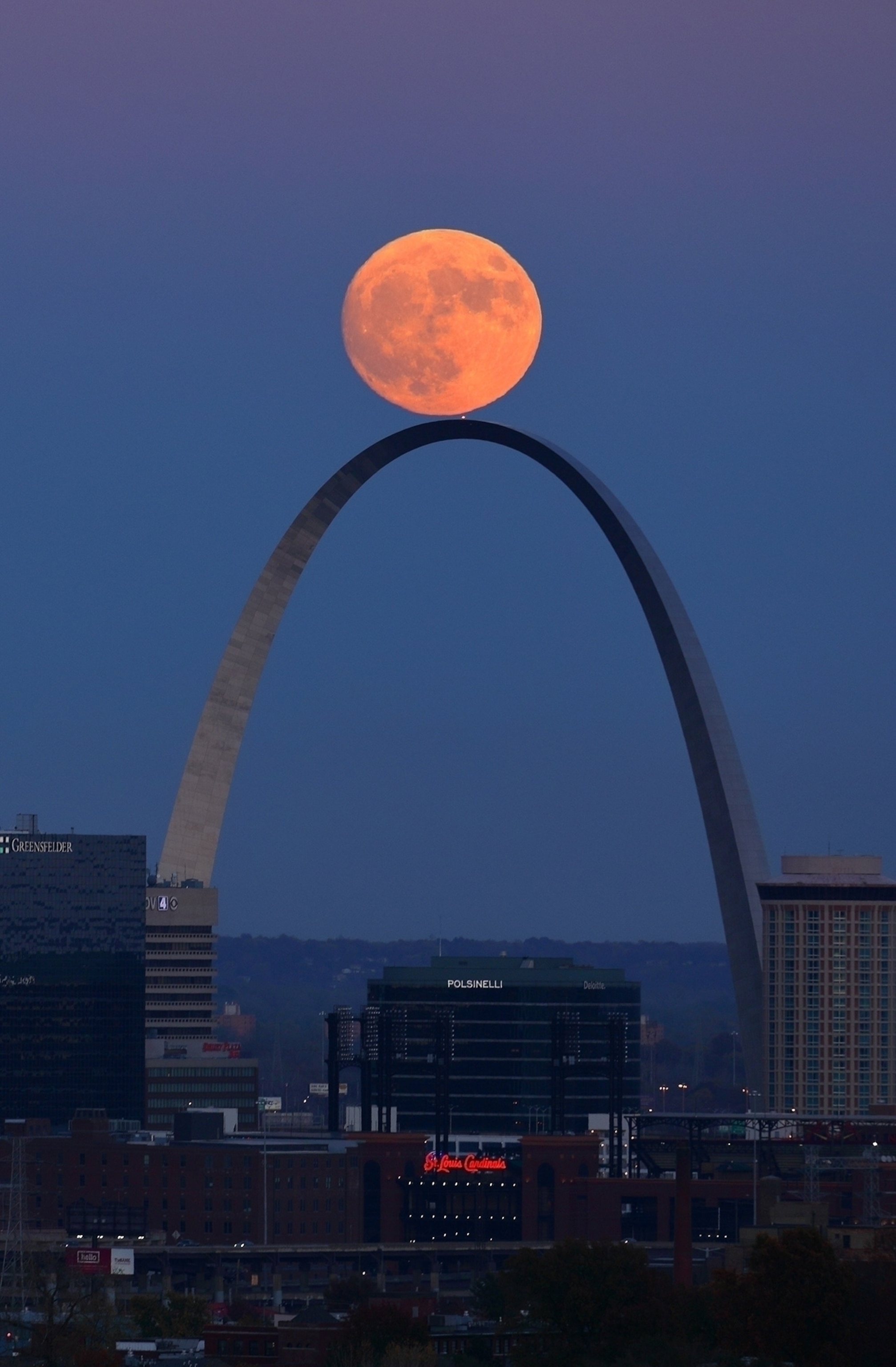
Nice Shot! Balancing the Supermoon on the St. Louis Arch
Google and a ten-year-old helped this photographer get this shot.
How do you get the best possible photo of the supermoon?
If you're a newspaper photographer, you climb 198 twisting steps to the top of a water tower.

"I knew I wanted to do something with the city skyline and compress the scene with a long lens," says David Carson, a photographer for the St. Louis Post-Dispatch. He had a hunch about the best place to do that—the Compton Hill Water Tower. One of the highest points of elevation in the city, the tower offers views of the downtown skyline and the Gateway Arch.
The prep work, started a few days before, involved Googling moonrise and sunset times.
"I found this great website that listed the U.S. Naval Observatory’s info on [the] moon’s position, with clear listings for time and degrees of altitude above the horizon," he says. "Since shooting this, someone showed me The Photographer’s Ephemeris app, which would have made life much easier."
Carson and his ten-year-old daughter Ava—special assistant for this shoot—headed to the water tower at about 3:30 p.m. on Sunday. By 4:15 they had set up and were ready to go, one camera mounted on a tripod and the other at the ready for handheld shots.
"As the moon peaked out from the horizon, I got excited," he says. "It climbed slowly up the Arch, passing just inside the leg … for a moment. The moon passed out almost at the top of the Arch, which is when I made the picture. I shot a bunch of frames. I quickly knew what the best image would be."

It was all done by 5:05 p.m. Carson was pleased.
"Not only did it work out like I thought it would, but Mother Nature cooperated with clear skies and a lovely sunset that helped make this frame beautiful. It’s rare that something you plan works out so well.
"As a news photographer you’re [often] making photos that don’t highlight the best parts of your community," Carson says of the grittier side of city life he's often on scene to cover.
"I think it’s equally important to show off how beautiful the city and Mother Nature can be. People in the community have really responded positively to this image, and that feels good. Also, my daughter Ava was a big help—it's cool to share that experience of seeing the supermoon with her. I’m sure we’ll both remember it."





